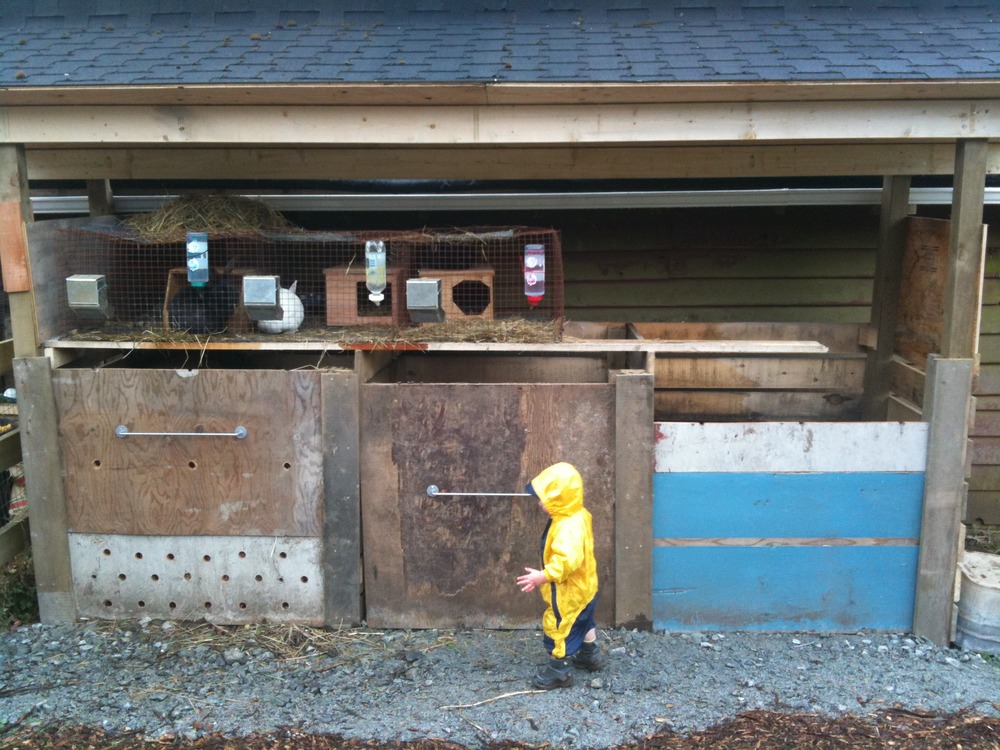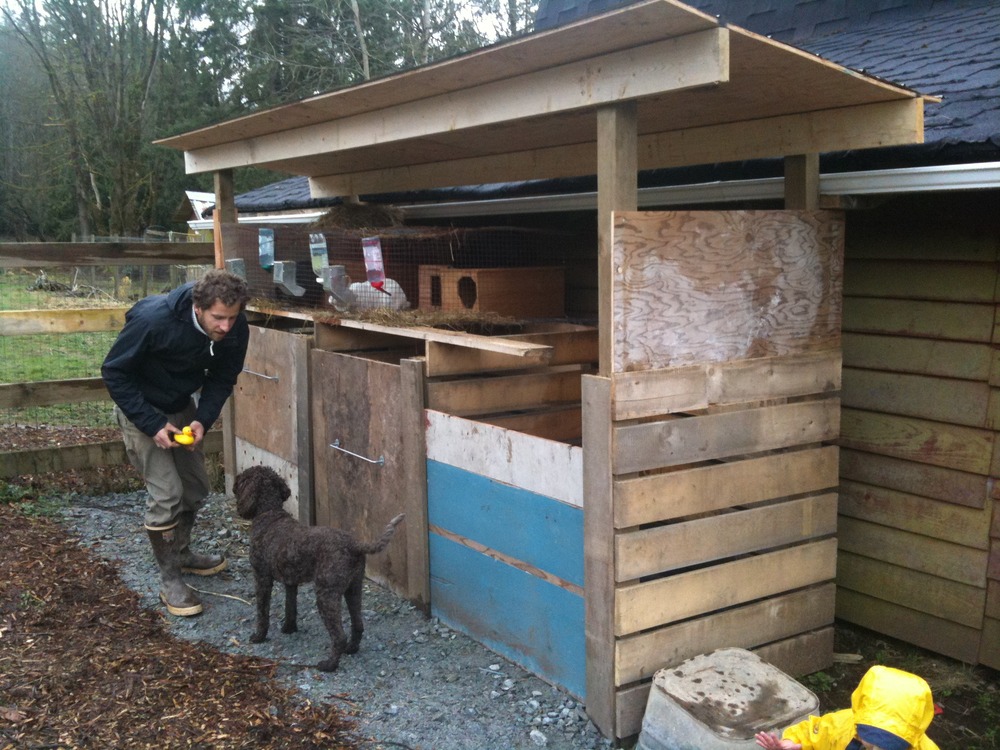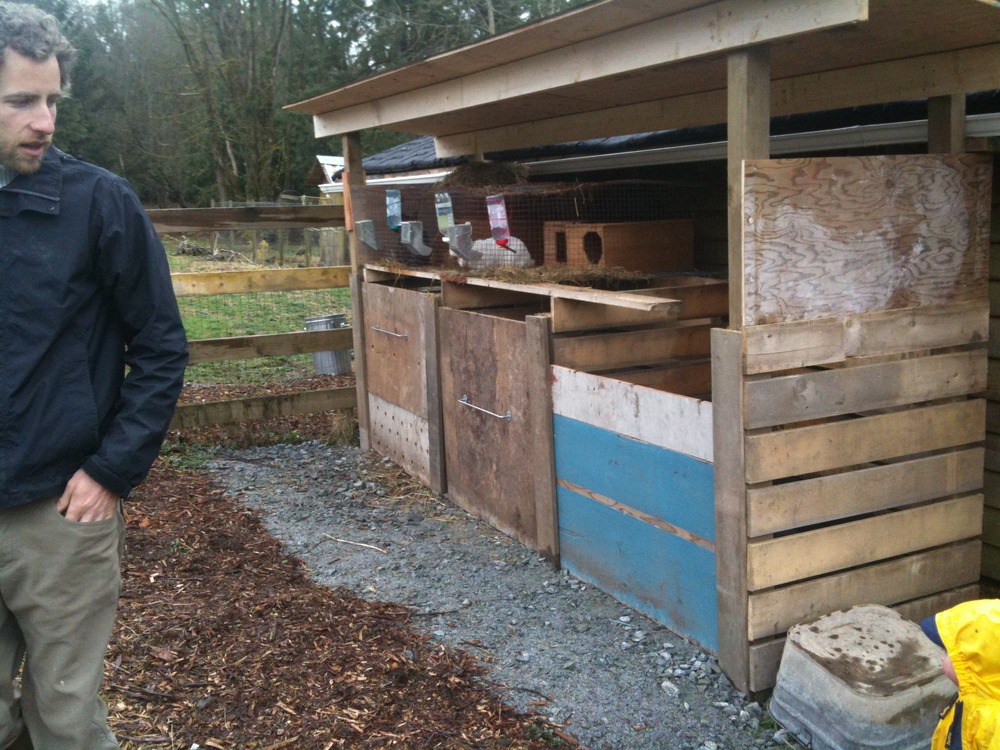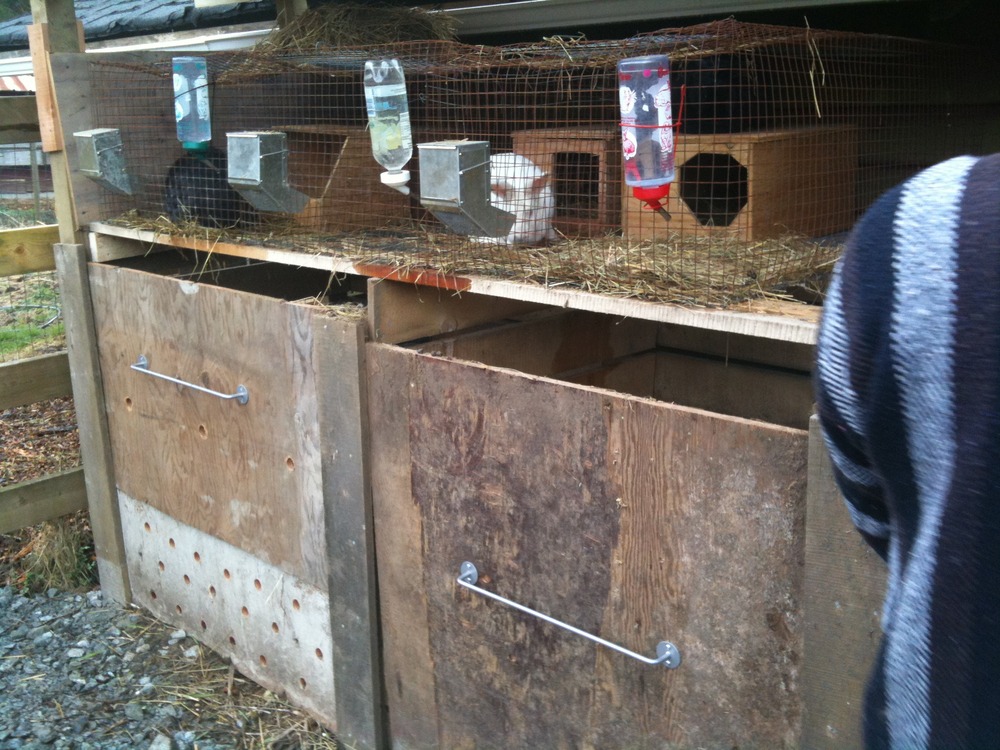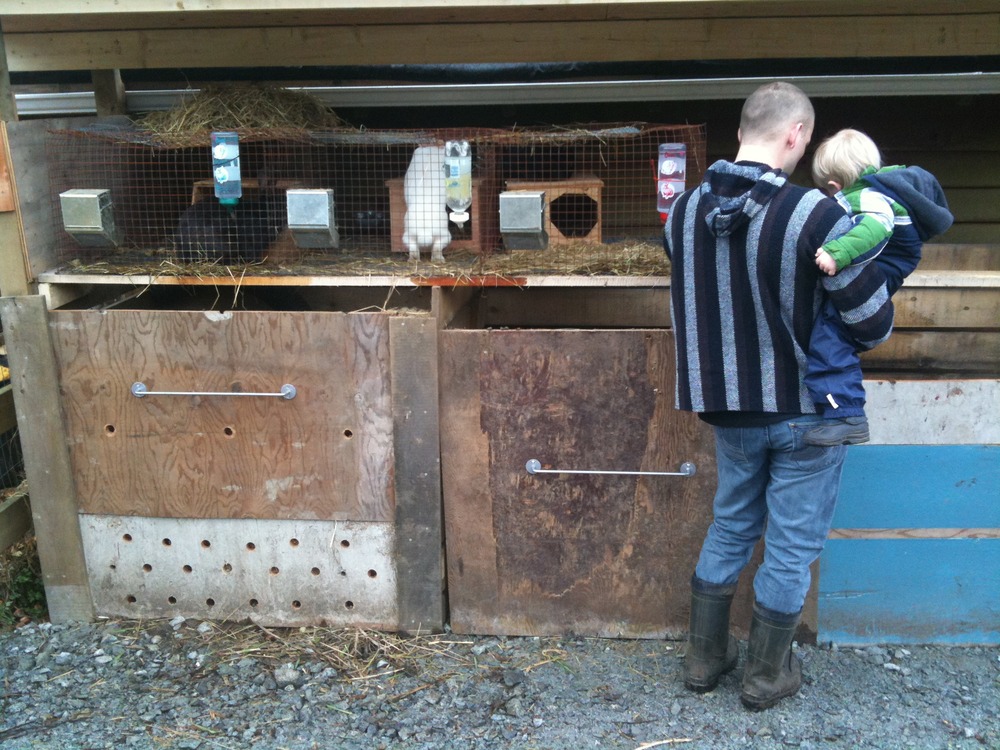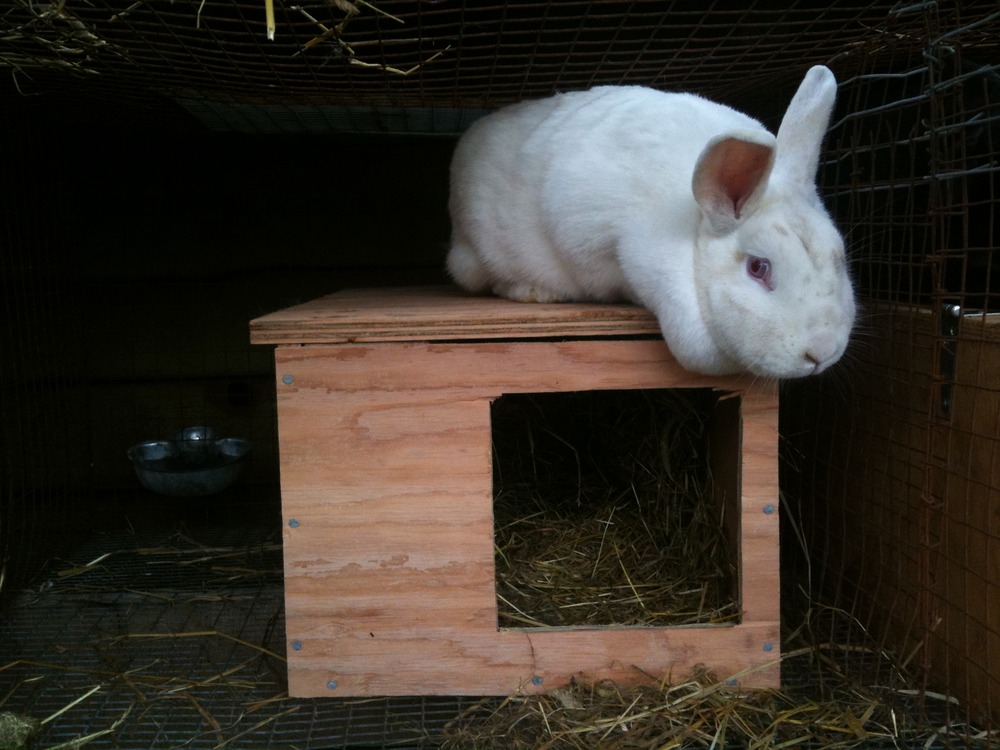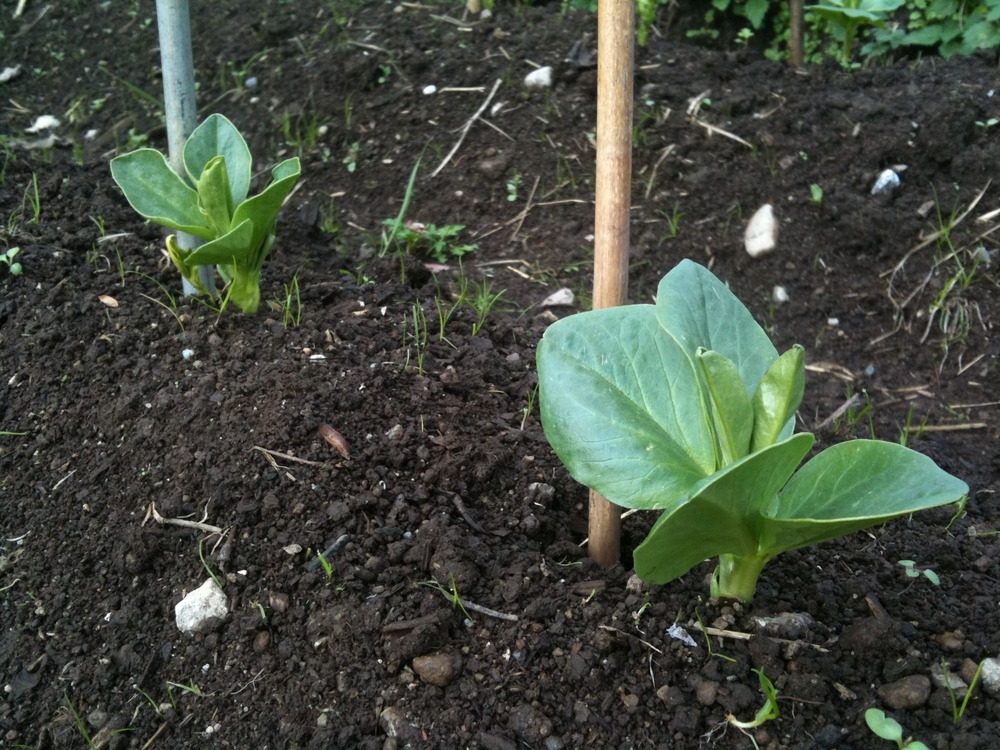Last weekend, we completed the compost/ rabbit hutch combo. Matt and Chris built a roof over the compost so we were able to slide our rabbit hutch right in above the bins, ensuring protection against the elements for the rabbits.
Combining a rabbit hutch with a compost (aka ‘worm bin’) is a great way to create rich compost by combining the strenths of the rabbit manure and the worms below. Gaia’s Garden: A Guide to Home=Scale Permaculture by Toby Hemenway puts it (and the overall benefits of working in tandem with animals) like this:
“…they employ rabbits in the garden by combining rabbit hutches with worm bins to naturally process manure into a perfect compost. This technique links two animals together and, like all well-connected relationships, provides benefits – great compost and fat worms – and solves problems, by conscientiously using rabbit manure and urine.
With animals, we extend the reach of our garden into yet another kingdom of nature. In the rich soil teem the unseen wonders that bring the dead back to life, the decomposers who work their magic on wood and leaf, on bone and chitin. Above ground are the plants, green marvels that capture the sunlight and build sugar and sap, the flowers, fruits, and seeds that feed us all. And now we bring in the animals that flit and buzz, scamper and scratch, nibble and manure. Animals are the final link in nature’s cycle. They are nature’s mechanics, accelerating growth here with seed disperal and fertilizer, retarding it there with a vigorous browse and trample. They haul nutrients and seeds great distances, from a lush nook to a dry care patch used for a dust bath, inoculating the barren soil. They process seedheads through their bodies and hoovers, mash seed into the soil, trim branches, thin the hordes of bugs. Without animals, our labour is doubled and redoubled, and we must pollinate, spray, dig, cart and spread fertilizer and fill the thousand others tasks easily and cherrfully done by our marvelous cousins. Without animals, nature just limps along, and in a garden lacking animals we must supply the crutches. By creating a garden that nurtures our two-, four-, and more-legged friends, we close the cycle and shift the burden more evenly, letting nature carry her share.” (pg. 171-172)
